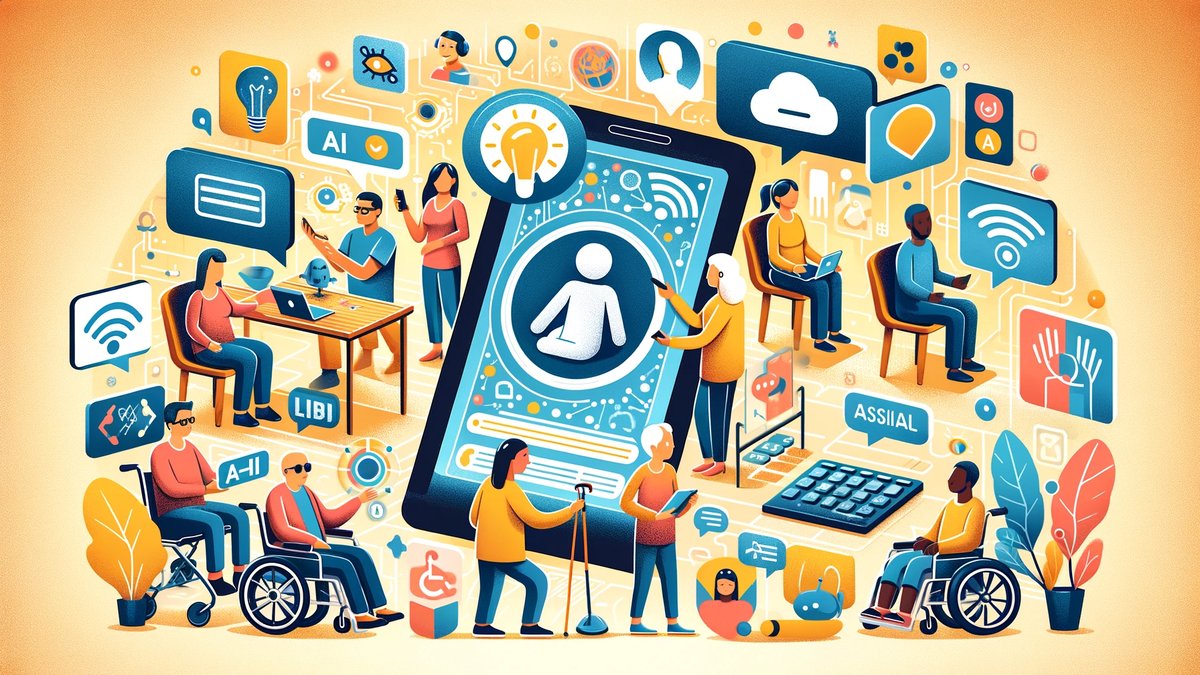Introduction
In the digital age, where technology plays a pivotal role in every aspect of our lives, the importance of making digital content accessible and inclusive cannot be overstated. Artificial Intelligence (AI), particularly Generative Pre-trained Transformers (GPTs) and chatbots, is revolutionizing the way we approach accessibility and inclusion. This article delves into how AI technologies are breaking down barriers and empowering individuals with disabilities, ensuring that everyone has equal access to information and technology.
The Imperative for Accessibility and Inclusion in Technology
Accessibility refers to the design of products, devices, services, or environments for people with disabilities, while inclusion ensures everyone, regardless of their abilities, is able to participate fully in society. In the context of technology, this means creating digital content and tools that are usable by all, including those with visual impairments, cognitive differences, and motor limitations.
The Role of AI in Enhancing Accessibility
AI technologies, particularly GPTs and chatbots, are at the forefront of the accessibility movement, offering innovative solutions to old problems. From real-time language translation to personalized user interfaces, AI is not just enhancing accessibility; it’s redefining it.
Chatbots for Users with Disabilities
AI-powered chatbots are becoming increasingly sophisticated, capable of understanding and responding to a wide range of user inputs. This makes them an invaluable tool for users with disabilities, providing a more intuitive and accessible way to interact with digital content. For individuals with visual impairments, chatbots equipped with natural language processing can deliver information audibly, while those with cognitive differences can benefit from chatbots that adapt their responses to suit the user’s understanding level.
GPTs for Real-Time Translation and Inclusive Communication
Language barriers can be a significant obstacle to accessibility and inclusion. GPTs are changing the game by enabling real-time translation and inclusive communication. This technology can instantly translate speech or text into multiple languages, making digital content accessible to a global audience. Moreover, GPTs can adapt the complexity of language used, making information more accessible to individuals with varying levels of language proficiency.
AI to Personalize Interfaces and Address Accessibility Barriers
One of the most exciting developments in AI for accessibility is the ability to personalize user interfaces. AI can analyze a user’s interaction patterns and preferences to adjust the interface in real-time, improving usability for people with motor limitations or cognitive differences. This could mean simplifying navigation for someone with cognitive disabilities or enhancing voice control for individuals with motor limitations.
Challenges and Future Directions
Despite the progress, there remain significant challenges in making technology truly accessible and inclusive. One of the main hurdles is ensuring that AI technologies themselves are designed with accessibility in mind. Additionally, there is a need for ongoing research to better understand the diverse needs of users with disabilities.
The future of AI for accessibility and inclusion is bright, with ongoing advancements in technology offering new ways to empower individuals. The focus must remain on creating user-centered designs that prioritize the needs and preferences of people with disabilities.
Conclusion
AI technologies, particularly GPTs and chatbots, are playing a crucial role in making digital content more accessible and inclusive. By designing chatbots for users with disabilities, leveraging GPTs for real-time translation, and using AI to personalize user interfaces, we can ensure that technology serves everyone, regardless of their abilities. The journey towards full accessibility and inclusion is ongoing, but with AI, we are moving closer to a world where every individual is empowered to participate fully in the digital age.
Ready for the Next Sub-Niche Article?
Let me know if you’re ready to dive into the next sub-niche: “Designing Chatbots for Users with Disabilities,” where we will explore in-depth how AI can cater to the needs of individuals with visual impairment, cognitive differences, and motor limitations.





Leave a Reply